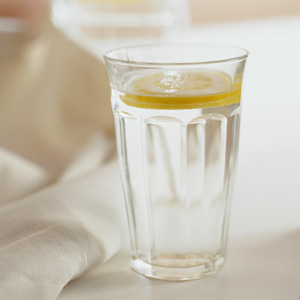
Drugs enter the water supply when unused amounts are excreted into the toilet. Drugs from commercial livestock and pets also enter the water supply after excretion.
A five-month investigation by the Associated Press, the details of which were released March 9, 2008, found that a vast array of pharmaceuticals — including antibiotics, anti-convulsants, mood stabilizers and sex hormones — have been found in the drinking water supplies of 24 major metropolitan areas, from Southern California to northern New Jersey. As many as 41 million Americans are potentially affected.
Members of the AP National Investigative Team pored over hundreds of scientific reports, analyzed federal drinking water databases, visited environmental study sites and treatment plants, and interviewed more than 230 officials, academics and scientists.
The concentrations of the pharmaceuticals they discovered are tiny, measured in quantities of parts per billion or trillion, and are far below the levels of a medical dose.
Drugs enter the water supply when unused amounts are excreted into the toilet. Drugs from commercial livestock and pets also enter the water supply after excretion.
While researchers do not yet understand the exact risks from decades of persistent exposure to random combinations of low levels of pharmaceuticals, there may be alarming effects on human cells and wildlife. Nevertheless, utility companies insist their water is safe.
Recent laboratory research has found that small amounts of various medications have affected human embryonic kidney cells, human blood cells and human breast cancer cells. The cancer cells proliferated too quickly; the kidney cells grew too slowly; and the blood cells showed biological activity associated with inflammation.
“We recognize it is a growing concern and we’re taking it very seriously,” said Benjamin H. Grumbles, assistant administrator of water at the U.S. Environmental Protection Agency.
The AP investigation also indicates that watersheds, the natural sources of most of the nation’s water supply, are contaminated as well. Pharmaceuticals also permeate aquifers deep underground, the source of 40 percent of the nation’s water supply.
Even consumers of bottled water and home filtration systems don’t necessarily avoid exposure. Bottlers, some of which simply repackage tap water, do not typically treat or test for pharmaceuticals, according to the industry’s main trade group. The same goes for the manufacturers of home filtration systems.
The water in Phoenix has not been tested as part of the AP investigation. The federal government doesn’t require any testing and hasn’t set safety limits for drugs in water. Given the power and influence of the pharmaceutical industry, safety limits — if there are such things — could be a long time coming.
Reprinted from AzNetNews, Volume 27, Number 2, April/May 2008.





August 1, 2012
Environment, Health